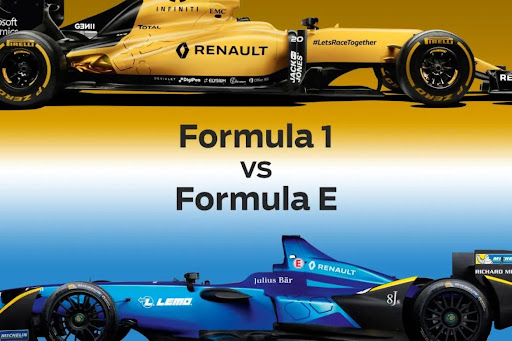Racing has always been a sport driven by speed, innovation, and technology. In the modern era, two premier motorsport championships are leading the way: Formula 1 and Formula E. While both share similarities, they also differ in crucial ways that shape the future of motorsport. The Sky Exchange ID Report takes a deep dive into these two racing series to analyze their strengths, challenges, and prospects.
Technology and Performance
Formula 1 has long been the pinnacle of speed and engineering excellence. With turbo-hybrid engines producing over 1,000 horsepower, F1 cars are some of the fastest machines on the planet. The aerodynamics, tire management, and energy recovery systems contribute to making each race a technical marvel.
Formula E, on the other hand, is at the forefront of electric racing. Instead of internal combustion engines, these cars run on fully electric powertrains. While not as fast as F1 cars, they focus on efficiency, battery technology, and sustainable racing. Formula E has played a crucial role in advancing electric vehicle (EV) innovation, which is being integrated into consumer automobiles.
Sustainability and Environmental Impact
One of the biggest distinctions between these two series is their approach to sustainability. Formula 1 has made significant strides with hybrid technology and aims to achieve carbon neutrality by 2030. Sustainable fuels and improved energy recovery systems are shaping its greener future.
Formula E, however, was designed with sustainability at its core. The series exclusively promotes electric mobility, utilizes renewable energy sources, and limits waste. From fully recyclable battery systems to street circuits that minimize environmental disruption, it is a prime example of how motosports can align with global eco-friendly goals.
Fan Engagement and Racing Format
Formula 1 boasts a legacy dating back to 1950 and enjoys a massive global following. Iconic circuits like Monaco, Silverstone, and Monza provide thrilling races year after year. With strategic pit stops, tire choices, and weather factors, the unpredictability of F1 keeps fans on edge.
Formula E offers a different but exciting format. Races are held on street circuits in major cities, making them more accessible to urban audiences. The fan-driven Attack Mode and Fan Boost features allow spectators to play a role in the race outcome, increasing interaction and engagement.
Which Series Represents the Future?
Both championships are evolving, but they represent different aspects of motorsport’s future. Formula 1 continues to push the limits of speed and hybrid efficiency, while Formula E leads the charge in electrification and sustainable racing practices. The shift towards environmentally friendly motorsport suggests that elements of both will shape the future of racing.
The Sky Exchange ID Report recognizes that while Formula E is an innovator in electric mobility, Formula 1’s technological advancements and heritage keep it at the top of global motorsport. The future may see an integration of both, leading to a new era of competitive, high-performance, and sustainable racing.
Conclusion
Ultimately, Formula 1 and Formula E serve different yet complementary purposes in the world of motorsport. While F1 continues to captivate fans with its speed and legacy, Formula E is pushing the boundaries of sustainability and technological evolution. As the automotive world transitions towards greener solutions, both series will likely influence each other, ensuring that racing remains exciting, innovative, and aligned with global environmental goals.





























